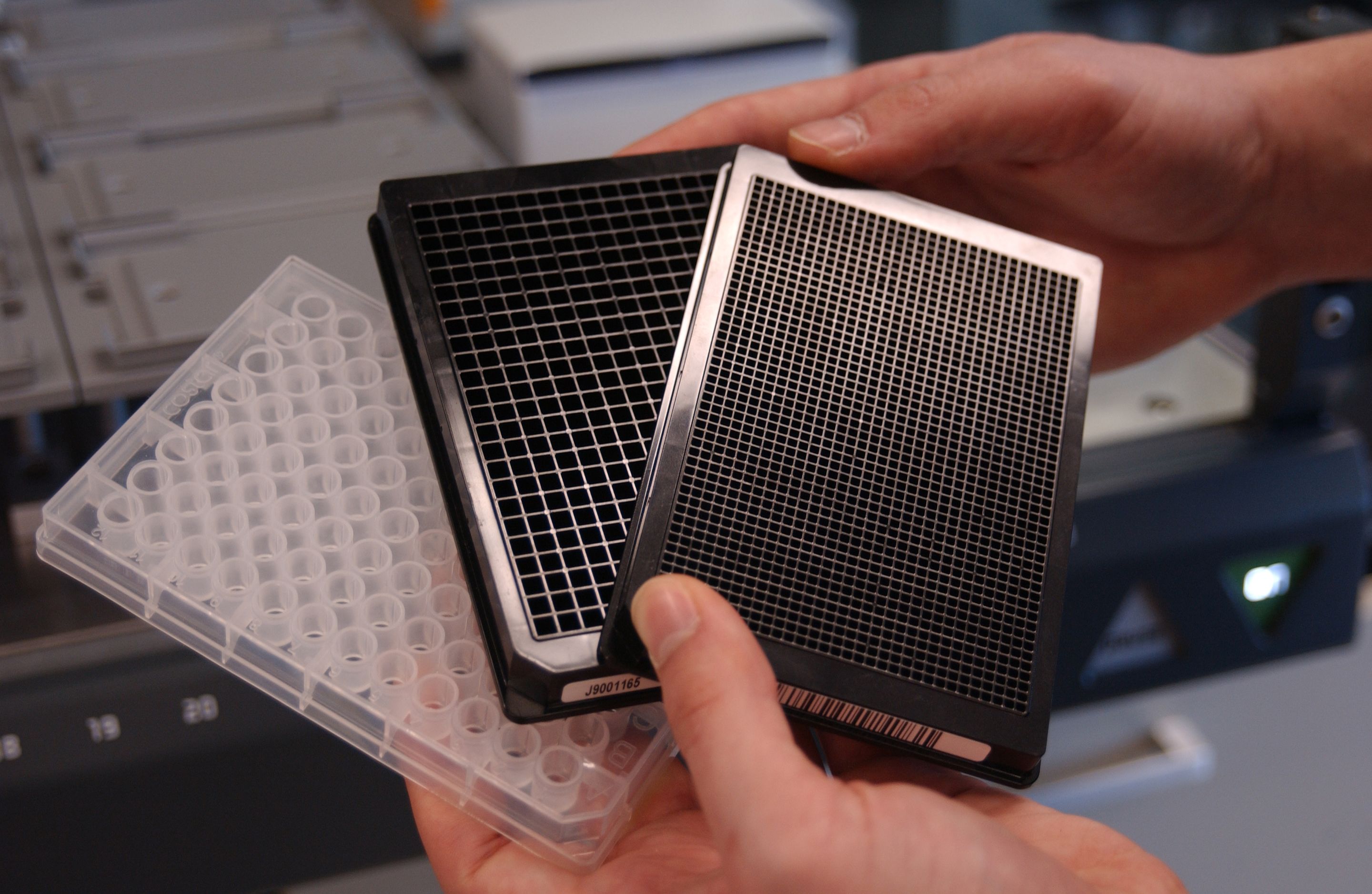Screening
Screening is obviously a very broad area of scientific research. In this document, we limit the scope to screening of plate-based carriers using digital microscopy. This means that Phaedra deals with image and/or numeric data generated by taking readouts of plates using a digital microscopy instrument.
Plate
Plates are physical containers that have a number of wells embedded in them. Common formats are 8x12, 16x24 and 32x48 wells per plate. Phaedra supports arbitrary dimensions, provided that the plate has a rectangular format.

Substances of interest are added into the wells, and the activity of the substances is measured either once or repeatedly by having an instrument perform a readout of the plate.
Experiment
An experiment in Phaedra is simply a collection of plates. Grouping plates correctly into experiments is important for some functionality such as experiment-wide normalization, plate polishing or multiplo dose-response curve fitting, where data from multiple plates is taken together for calculation. In other cases, experiments are simply a means for organizing your data efficiently.
Measurement
When an instrument takes a readout of a plate, the resulting dataset is called a measurement. In Phaedra, measurements may contain up to three categories of data:
- Image data: images taken of each well, possibly across multiple channels (wavelengths). If multiple regions (fields) of a well are imaged, they will be stitched together by Phaedra into a single image per well per channel. In addition, if the image analysis routine generated outline masks or overlays, those may be captured into the measurement as well.
- Subwell data: a numerical 2D dataset for each well where the rows represent “subwell items”, such as single cells. An example is the single-cell dataset generated by an image analysis routine.
- Well data: a numerical 2D dataset for the whole plate where the rows represent wells.
Substances and Compounds
A common use case for Phaedra is to process data from small molecule or compound screening. Here, compounds are inserted into plate wells and their effects are measured by an instrument. When such a plate is defined in Phaedra, each well may be annotated with one or more substances such as compounds. A substance in Phaedra is always defined by a substance type, name and a concentration.